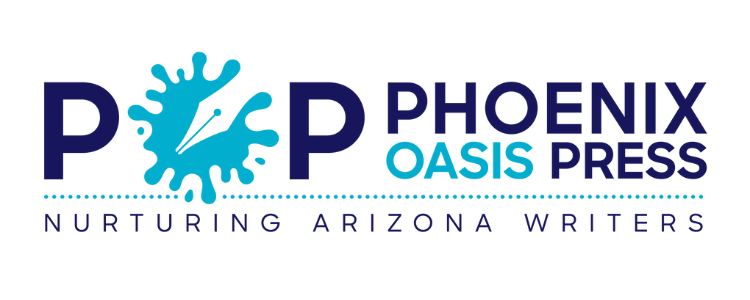You’ve finished your first draft … now what?
You've put blood, sweat, and tears into your first draft. But what do you do now? Read on!
Written by Derek Barton
In front of you on your desk sits a stack of accumulated pages. The culmination of your blood, sweat, and tears, your finished draft sits patiently. It stares up at you, waiting for you to do something with it. It sits and stares. And sits some more. All while you ponder, ‘what do I do now?’
While I don’t have all the answers, I have been in your shoes. Last night, I completed my first round of edits on my seventeenth novel. If you plan to independently publish your work – meaning you handle everything and are in full charge of your artwork, pricing, and sales – read on for some tips to help you move forward.
Note that this template / process works well for me. I offer it as a starting point for you to personalize to your goals and journey.
Step 1: Editing
Everyone needs an editor. No one’s work is clean, error-free, and perfect out of the gate. But before you jump into editing, take a month or two off from your manuscript. Set it aside and give yourself some mental distance. When you go back to it, you’ll approach it with fresh eyes and an open mind to improvements.
Free online tools
Free online editing services like Grammarly, Hemingway Editor, and ProWriting Aid can help keep your prose concise, clear to the reader, and develop strong reader engagement in your work. Programs like this will highlight areas of improvement including:
Sentence structure - fragments, run-ons, or overly complex sentences
Identifying passive voice
Flagging over-used or repetitive word choices
Highlighting weakeners - adverbs and phrases like ‘I think,’ ‘maybe,’ ‘really,’ ‘just’
Alpha reader
Alpha readers are readers or other writers you trust who have interest or experience with writing in your genre. Expect an alpha reader to give you a better, well-informed review of your work where they point out plot holes, missing or unaccounted characters, and jumbled timelines. Prepare yourself for navigating alpha (and any kind of) feedback, and also be clear about what you would like the reader to look for. Here are tips on how to do that!
Costs
The standard fee for editors is $.02 to $.04 a word. That can really add up. If we split the difference and use $0.03 per word with a 100,000 word manuscript, you’re looking at a $3,000 cost for an editor. Be sure to do everything noted above before you spend money on editing services. I have an ongoing internal debate about the cost versus the results of paying for editors.
Step 2: Your blurb
You’ve cleared all the editing hurdles and what you now hold in your hands is a manuscript that you would proudly push ‘publish’ on. Time to write your book cover blurb.
If you’re like me, writing a concise, engaging, appealing paragraph or two that summarizes your 300-page novel is challenging. Some people are born salespeople. That’s what a book blurb is: a sales pitch asking someone to buy your story.
This is where tools like ChatGPT can be helpful. I write one version of my blurb then use AI to rework it for impact. You can use ‘personas’ in your ChatGPT prompting for effect. IE: You can ask it to rework your words so they would appeal to a specific audience, like horror readers. With AI’s help, you can generate numerous options quickly and choose the one you like best.
NOTE: This is the only way I use AI or similar programs when writing fiction. Having a program write any part of your story is seriously frowned on and being critically monitored. I do not advise using AI for any other purpose.
Step 3: Format
Who
When publishing independently, you need to decide who you want to publish your work. Industry estimates say 85% of all books bought online are through Amazon. I don’t want to narrow my possible buyers’ market, so I always work with Amazon. Other options include Nook, which is through Barnes & Noble Print services.
ISBNs
You’ll need to obtain your ISBN through whomever you choose to publish with. An ISBN is like a book’s fingerprint. It ensures your book will be stored in the Books in Print database, which publishers, retailers, and libraries consult. You need one ISBN for each edition and format of your book.
If you decide to purchase your ISBN on your own, look to places like Bowker. Research costs, and how many you might need.
Page sizing
Once you decide on the printing platform, you can find their standard page size and book gutter measurements, etc. This gives you an idea of how many pages your story is. The printing service will have other key guidelines that you will have to follow.
Step 4: Book Cover Design
Here is one step I tried to accomplish on my own to keep my costs down. Unfortunately, as much as I want to say my own crafted book covers were professional and well crafted… they were not. This step is one I recommend you invest dollars in. Go to Fiverr.com and research cover artists for hire. Or ask around in your network to see if you are connected to a designer. There are some very respectable artists who charge fair prices. Often, they’ll offer a variety of gigs that should meet your needs.
After publishing 16 novels, I wrote down some book cover design tips. When in doubt, keep it simple. Wander your local bookstore or browse Amazon or Nook digital bookshelves to get an idea of what authors are doing today in book design.
Step 5: Marketing
Trust me, your job doesn’t stop once the book is live. You need to drive awareness of your book. You can do this by participating in book festivals, creating digital ad campaigns, and using social media to generate word of mouth. Don’t underestimate the value of having friends, family, and coworkers spread the news of your book on social media.
Some marketing experts advise you start work early on your marketing plans. Advertising early and stoking the fires for pre-orders can be a great benefit. My advice is to finish your novel first. A lot goes into making ad content, designing ads and creating a campaign plan.
A crucial aspect of marketing is to focus on the audience most likely to buy your story. Then, create content that appeals most to them.
I am not saying marketing is impossible, but it is certainly complicated. Plan to set aside time, effort, and a willingness to experiment.
Dig deeper into self-publishing
I’ve given you some of the key steps of my self-publishing process. If you’re interested in reading more about my journey with some of these topics, below are four additional resources:
After You Have Climbed the Mountain
Breaking Out -- Finding the Keys to Get Noticed
Take the step and share your story
The path to independent publication is a winding road with twists and turns. I hope that reading about my experiences has helped you in some small way move toward sharing your story with the world. You’ve done the truly hard and amazing part by writing your story. If you could do that, you can do anything!
ABOUT DEREK BARTON
DEREK BARTON GREW UP IN INDIANA, A SELF-PROFESSED ‘TYPICAL INTROVERT KID'.’ THE HORROR NOVELS OF KING AND KOONTZ AND THE FANTASY WORK OF R.A. SALVATORE FASCINATED HIM. DEREK HAS WRITTEN AND PUBLISHED 16 BOOKS SINCE 2016. HE MOVED TO PHOENIX, ARIZONA IN 1996 WHERE HE MET HIS WIFE ERIKA. THEY HAVE THREE CHILDREN. FOLLOW HIS JOURNEY ONLINE AT AUTHORDEREKBARTON.BLOG.


